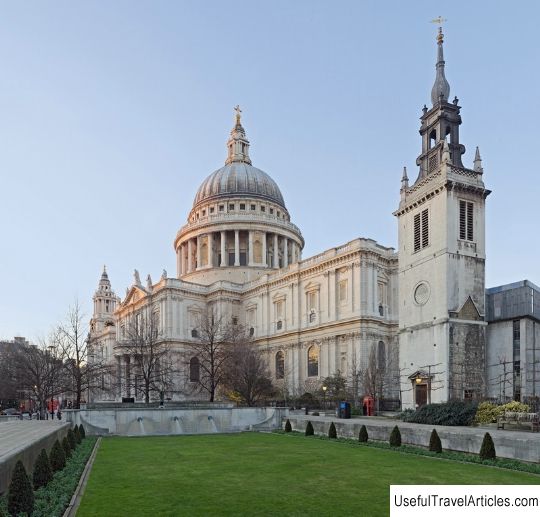Monument in the UK, London resort
Rating: 8,5/10 (3799 votes)  Construction of the monument in memory of the Great Fire of London of 1666 was started in 1671 and completed 6 years later. It looks like a replica of a Roman column, the so-called"Doric" version. The structure is a 60-meter pillar. By the way, exactly the same distance to the bakery of a certain Thomas Farinor, which was the epicenter of the fire. The construction of the object was supervised by the architect Christopher Wren and the hero of school textbooks physicist Robert Hooke. Perhaps, thanks to the participation of the latter, the monument acquired the functions of a gigantic laboratory device. Like the mysterious prehistoric Stonehenge, the Rena and Hooke dolmen of three centuries ago served as a kind of observatory - the inner cavity of the column easily turns into a kind of zenith telescope tube if you open the plug. In addition, the monument helped English scientists to comprehend the secrets of gravity and to prove related theories. Unfortunately, the planned experiments were not brought to their logical conclusion due to the round-the-clock concussion generated by the traffic. From the time of scientific experiments, a spiral staircase remained, each of the 311 steps of which is exactly 6 inches high - this was necessary for experiments aimed at accurate measurements of atmospheric pressure, the staircase goes through the column to the very observation deck at the top. From there, by the way, a stunning view of the city opens up, which adults can watch for 3 pounds sterling, and children for 1.5. Peter I ascended to the top of the pillar while traveling incognito across Europe - a corresponding entry was found in the diary of the Russian Tsar. The monument is crowned with a huge bronze vase containing a decorative"fireball" bristling with prickly tongues of flame. Outside, three parts of the monument are dotted with inscriptions in Latin, telling about the destruction of a large part of the capital, royal assistance to the restoration work and, finally, the plan perpetuating the fiery catastrophe that destroyed 5/6 of the city. Several times, decades later, the inscription was supplemented in accordance with the changed political course. The fourth side of the monument is occupied by a particularly convex type of bas-relief -"high relief", on which King Charles I and his brother Jacob give consolation to the residents who have lost their homes. The monument is erected in the City - where Monument Street and Fish Street meet Hill. Nearby is the metro station named after the monument. We also recommend reading Battersea Power Station in the UK, London Resort Topic: Monument in the UK, London resort. |




